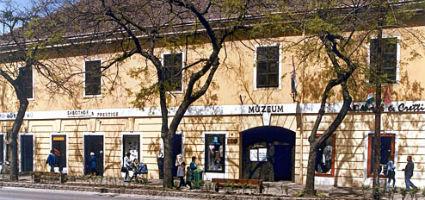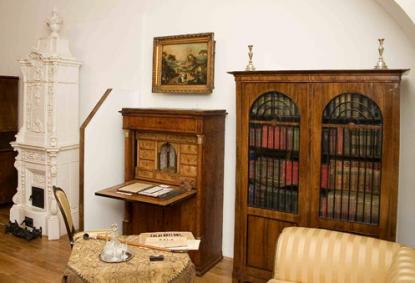2024. November 22. Friday
György Thúry Museum - Nagykanizsa
 |
Address: 8800, Nagykanizsa Zrínyi u. 62.
Phone number: (20) 224-9695
E-mail: tgym@tgym.hu
Opening hours: Wed-Sun 10-17
|
Museum tickets, service costs:
|
Ticket for adults
|
500 HUF
|
|
|
Group ticket for adults
(min. 8 people)
|
350 HUF
|
|
|
Ticket for students
|
250 HUF
|
|
|
Ticket for pensioners
|
250 HUF
|
|
|
Ticket for families
(min. 4 people)
|
800 HUF
|
/ family
|
|
Guide
|
4000 HUF
|
The first part of the exhibition presents the history of the Mura area and the West Basin of the Little-Balaton from the new Stone Age until the Middle Ages. The second unit shows the development of the town of Nagykanizsa in the 18th century and in the period of Dualism.

The first ward invites the visitors to the Neolithic. Ceramics and interesting pieces of stone works, idols and God statues are shown from excavations from around Nagykanizsa. The findings belonged to the culture of Starčevo, Sopot and Polish Culture. We also show Line Ornamented objects from the Transdanubian Area.
In the second ward, we show findings from the Copper Age to the end of the Roman period. Besides the Copper Age, Early Bronze Age, Late Bronze Age and Celtic settlement models of the rustice from the 3-4 century from near Nagykanizsa.
In the following section, we show the history of Kanizsa, as well as the castle. The different periods in which works were performed on the castle are well demonstrated on an interactive model in the middle of the room on which the four periods appear after pushing a button for a period each.
The visitors may learn about the development after the castle was taken down in 1702. It was the rebirth of the town that lays at the meeting point of five important roads.
The fairs and markets are represented via showing wagons used for transportation of crops, merchants and details of markets. The department stores and the atmosphere of the shops from the beginning of the 20th century are demonstrated with the shops of Rosenfeld Adolf and Soni, Fischel Fülöp and the windows of the shops of Martinek Fanny. The visitors may also learn of the work in the Savings Bank of Nagykanizsa founded in 1845 as the first bank in the county, as well as the products of factories that came to existence one after another from 1890.
The social and cultural life in the town is shown in a ward that is furnished with the fittings of the local casino. The furniture of the Black Eagle Pharmacy is shown in a separate ward. It is the first time the audience can see it for the first time after its restoration.
The exhibition is made more exciting with interactive computer programs.

The first ward invites the visitors to the Neolithic. Ceramics and interesting pieces of stone works, idols and God statues are shown from excavations from around Nagykanizsa. The findings belonged to the culture of Starčevo, Sopot and Polish Culture. We also show Line Ornamented objects from the Transdanubian Area.
In the second ward, we show findings from the Copper Age to the end of the Roman period. Besides the Copper Age, Early Bronze Age, Late Bronze Age and Celtic settlement models of the rustice from the 3-4 century from near Nagykanizsa.
In the following section, we show the history of Kanizsa, as well as the castle. The different periods in which works were performed on the castle are well demonstrated on an interactive model in the middle of the room on which the four periods appear after pushing a button for a period each.
The visitors may learn about the development after the castle was taken down in 1702. It was the rebirth of the town that lays at the meeting point of five important roads.
The fairs and markets are represented via showing wagons used for transportation of crops, merchants and details of markets. The department stores and the atmosphere of the shops from the beginning of the 20th century are demonstrated with the shops of Rosenfeld Adolf and Soni, Fischel Fülöp and the windows of the shops of Martinek Fanny. The visitors may also learn of the work in the Savings Bank of Nagykanizsa founded in 1845 as the first bank in the county, as well as the products of factories that came to existence one after another from 1890.
The social and cultural life in the town is shown in a ward that is furnished with the fittings of the local casino. The furniture of the Black Eagle Pharmacy is shown in a separate ward. It is the first time the audience can see it for the first time after its restoration.
The exhibition is made more exciting with interactive computer programs.
